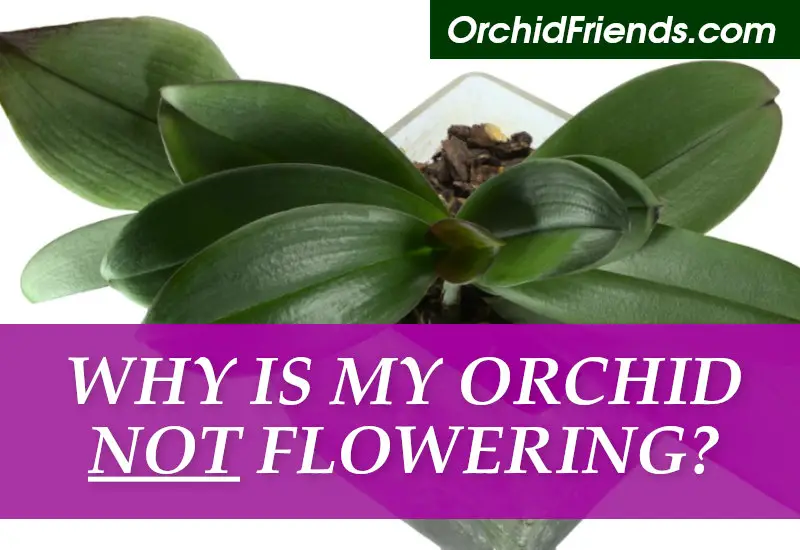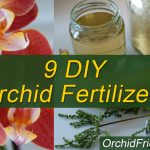
** This post is written and edited by a human being **
Why Is My Phalaenopsis Orchid Not Flowering?
If your Phalaenopsis orchid isn’t blooming, it can be frustrating, but it’s not uncommon. Several factors can prevent your orchid from flowering, and identifying the cause is the first step in helping your plant thrive. Here are the most common reasons why a Phalaenopsis orchid may not flower and how you can encourage blooming.
1. Lack of Proper Light
Phalaenopsis orchids need bright, indirect light to bloom. If your orchid is in a spot that is too dim, it may not be receiving enough light to trigger the blooming process. Insufficient light can also cause the leaves to become dark green and stunted.
Solution: Move your orchid to a location with bright, indirect light. Avoid placing it in direct sunlight, which can scorch the leaves. A window with sheer curtains or a spot near a north- or east-facing window is ideal.
2. Improper Temperature
Phalaenopsis orchids bloom best when they experience a slight temperature drop between day and night. If your orchid is kept in temperatures that are too warm or consistent, it may not bloom. Ideal temperatures range between 65°F to 75°F (18°C to 24°C) during the day, with a slight drop at night to around 60°F (15°C).
Solution: Ensure that your orchid is kept in a room with consistent temperatures, and try to expose it to a slight nighttime temperature drop. Avoid placing it near drafts, heaters, or air conditioners, which can cause temperature fluctuations.
3. Insufficient Rest Period
Orchids need a rest period after they finish blooming. If your Phalaenopsis is continuously exposed to high levels of light or fertilizer, it may be in a perpetual state of growth and fail to enter its blooming phase.
Solution: After the blooming cycle ends, reduce the amount of fertilizer and give your orchid a “rest” period, allowing it to take a break from heavy care. During this time, avoid fertilizing too frequently and reduce watering slightly.
4. Over-fertilization
While orchids do benefit from regular feeding, too much fertilizer can encourage lush leaf growth at the expense of flowers. Over-fertilizing can also cause salt buildup in the soil, which can harm the roots and the overall health of the plant.
Solution: Fertilize your Phalaenopsis orchid with a balanced, diluted orchid fertilizer about once a month during the growing season. Be sure to flush the potting mix with water occasionally to prevent salt buildup.
5. Age of the Plant
Sometimes, the age of the orchid itself can be a factor. Younger Phalaenopsis orchids may take time to mature and may not flower until they are around 1–2 years old.
Solution: Be patient! If your orchid is still young, it may just need a little more time to mature before it can bloom.
By adjusting the light, temperature, watering, and feeding routine, you can encourage your Phalaenopsis orchid to bloom again. Remember, these plants often need a little time and the right conditions to show off their beautiful flowers!
Why Are My Orchid Leaves Wrinkled
If you notice that the leaves of your Phalaenopsis orchid are wrinkled, it can be a sign of stress or an underlying issue. Wrinkling leaves typically indicate that your orchid is struggling with water or humidity imbalances. Here are the most common reasons why Phalaenopsis orchid leaves may become wrinkled:
1. Underwatering
One of the most common causes of wrinkled leaves is underwatering. When your orchid doesn’t receive enough water, it can’t properly hydrate its leaves, leading to dehydration. As a result, the leaves may shrink, wrinkle, and become soft.
Solution: Make sure to water your orchid thoroughly when the potting mix feels dry to the touch. Water deeply until it drains out of the pot’s drainage holes, and be sure the orchid is not sitting in standing water.
2. Low Humidity
Phalaenopsis orchids are native to humid environments, and they require consistent humidity to thrive. If the air around the plant is too dry, especially in winter or in air-conditioned rooms, the leaves can lose moisture, resulting in wrinkles.
Solution: Increase the humidity around your orchid by using a humidity tray, misting the leaves (but not the crown), or using a room humidifier. Aim for a humidity level of 50-70% for optimal growth.
3. Overwatering or Root Rot
Though it seems counterintuitive, overwatering can also cause wrinkled leaves. When the roots are waterlogged and begin to rot, the orchid’s ability to take up water is impaired. This leads to the leaves becoming soft and wrinkled, despite being surrounded by excess moisture.
Solution: Check the roots for signs of rot—healthy roots should be firm and white/silvery/green. Trim any damaged roots and repot your orchid in fresh, well-draining orchid mix. Be sure to adjust your watering habits accordingly.
By addressing these issues, your Phalaenopsis orchid should be on the path to healthier, firmer leaves once again.
Tip: Check out Irene’s Step-By-Step Guide: What You Need For Keeping Indoor Orchids



